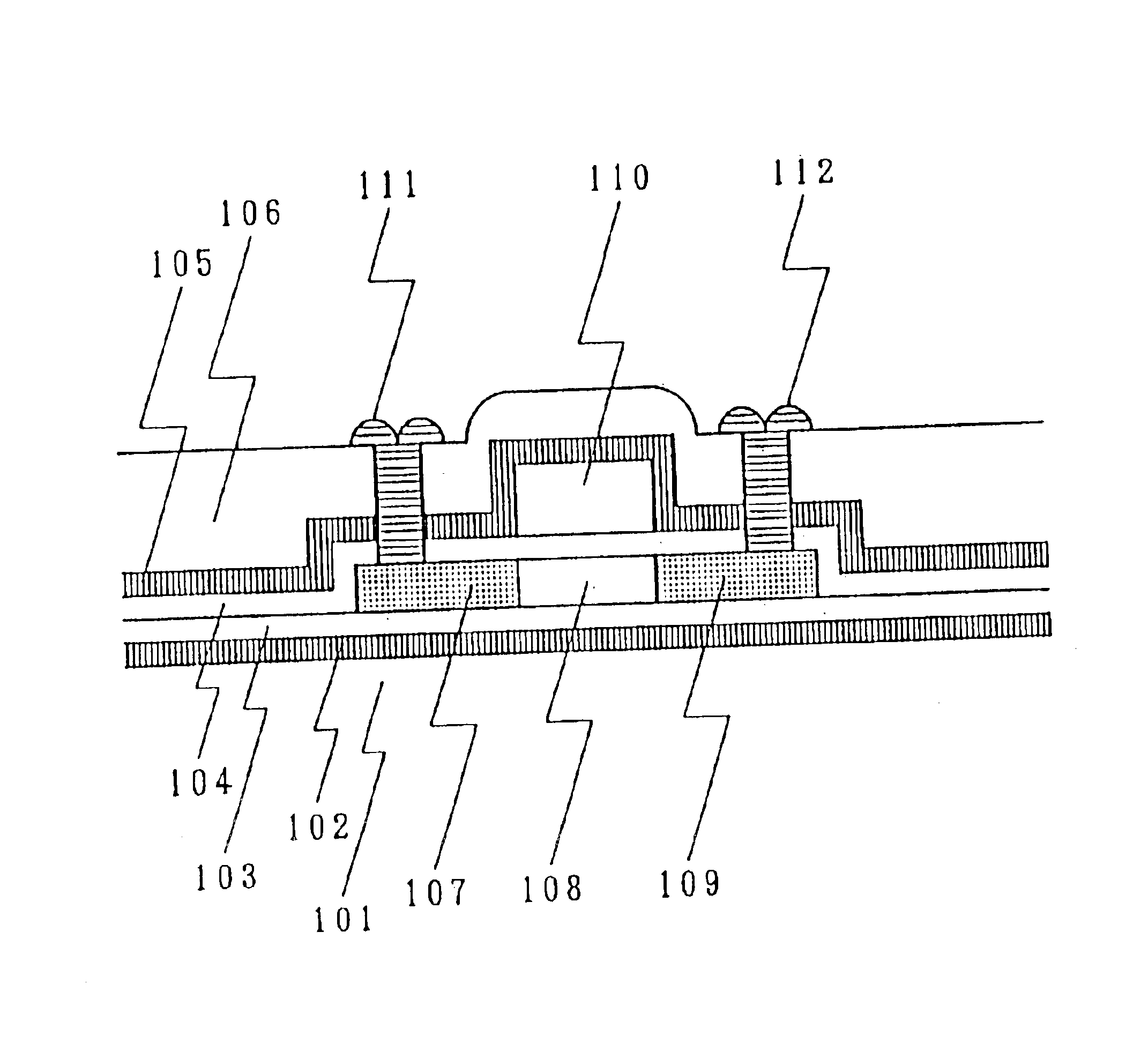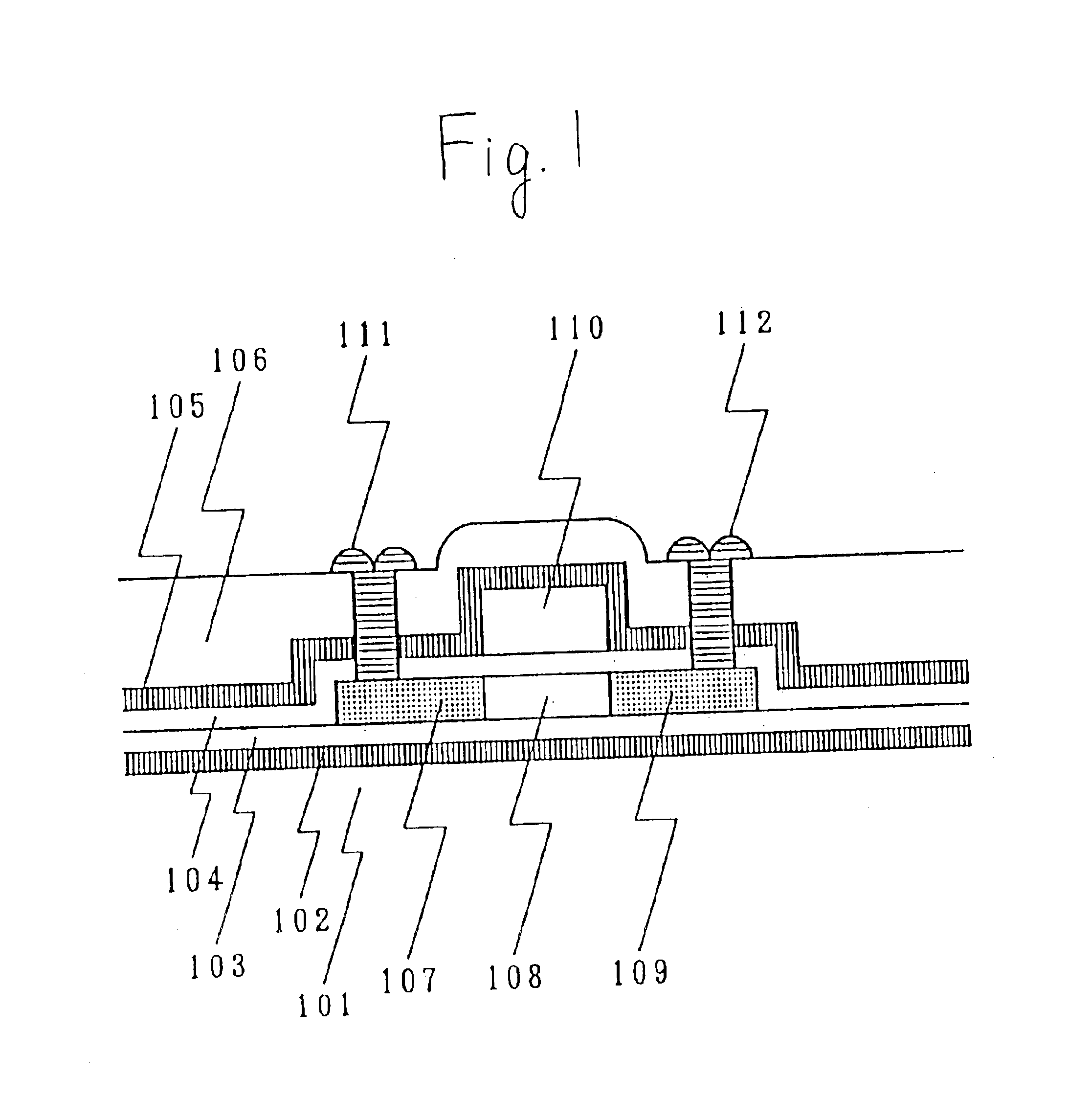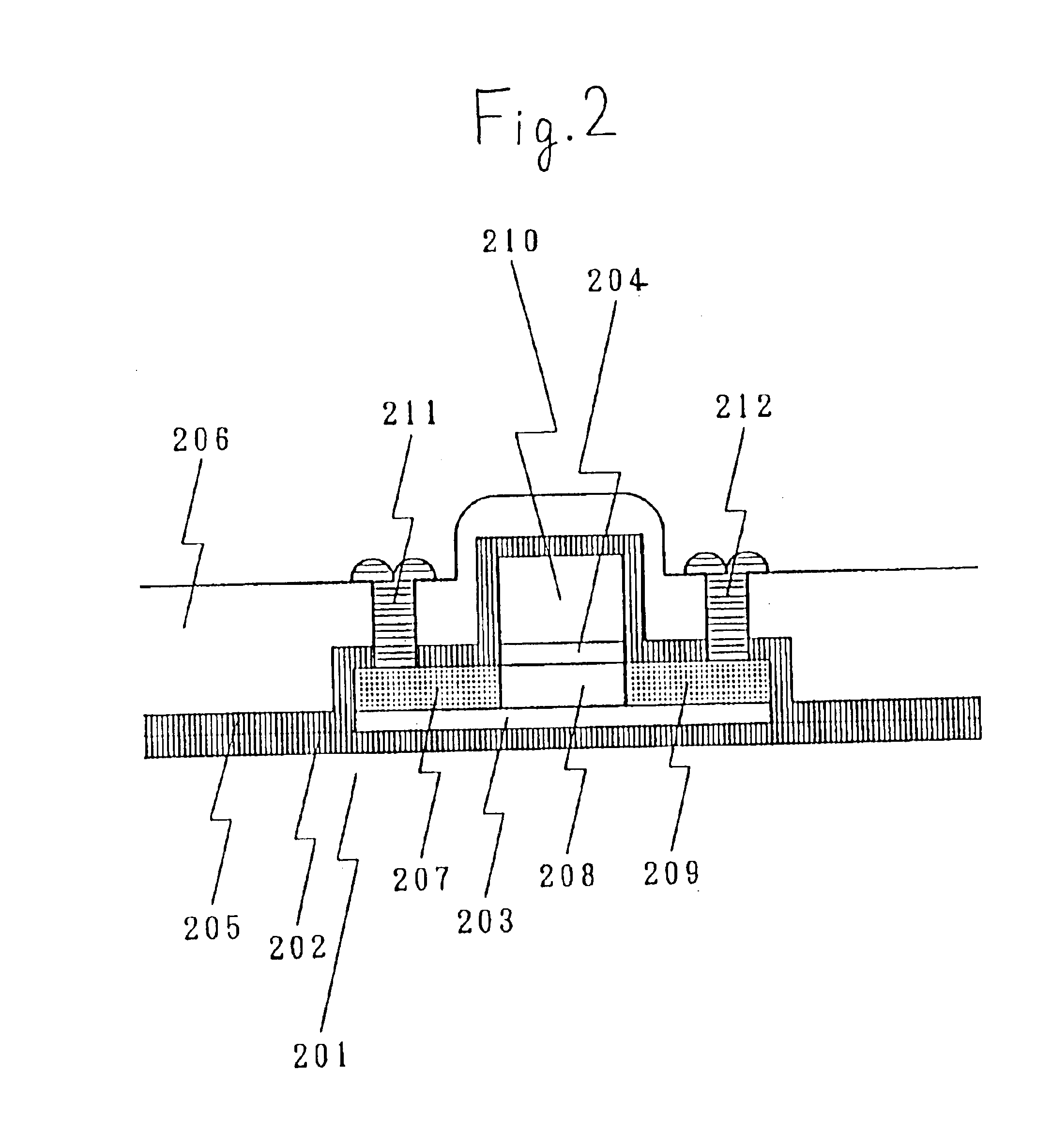Thin film transistor
a technology of thin film semiconductors and transistors, applied in the direction of semiconductor devices, electrical equipment, transistors, etc., can solve the problems of not being profitable, not low concentration of elements contaminated in the insulating substrate usable for a thin film semiconductor device, and difficulty in sending out strange elements to the outside in case of contaminating, etc., to achieve the effect of convenient
- Summary
- Abstract
- Description
- Claims
- Application Information
AI Technical Summary
Benefits of technology
Problems solved by technology
Method used
Image
Examples
example 1
EXAMPLE 1
The characteristics of TFT in accordance with the present invention is described as follows. TFT used in this Example was a LDD type TFT prepared on a quartz glass, according to the process of FIG. 4. First of all, a silicon nitride film 402 was formed in 100 nm thick, on a quartz glass 401 and also a back and a side thereof (i.e. in whole surface of the substrate), using a low pressure CVD method. Then, continuously by this low pressure CVD method, a silicon oxide film (insulating film) 403 (a low temperature oxidation film, LTO film) was formed in 200 nm thick. Lastly, by this low pressure CVD method as well, an amorphous silicon film was formed on the silicon oxide film 403 in 30 nm thick. At this time, the maximum process temperature was 600° C.
Next, the amorphous silicon was patterned into the island shape. Then, the very thin surface portion of the amorphous silicon was oxidized, in 2 to 10 nm thick by an anodic oxidation method. The oxidized surface portion comprised...
PUM
 Login to View More
Login to View More Abstract
Description
Claims
Application Information
 Login to View More
Login to View More - R&D
- Intellectual Property
- Life Sciences
- Materials
- Tech Scout
- Unparalleled Data Quality
- Higher Quality Content
- 60% Fewer Hallucinations
Browse by: Latest US Patents, China's latest patents, Technical Efficacy Thesaurus, Application Domain, Technology Topic, Popular Technical Reports.
© 2025 PatSnap. All rights reserved.Legal|Privacy policy|Modern Slavery Act Transparency Statement|Sitemap|About US| Contact US: help@patsnap.com



